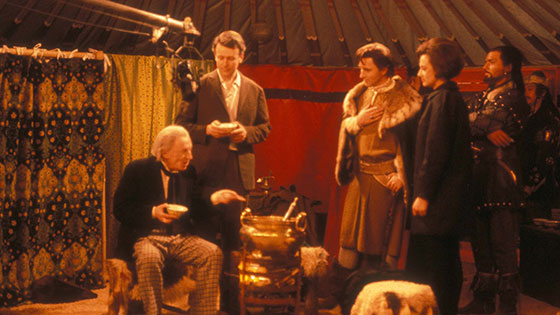October 09, 2013
To understand the wiping of Doctor Who - and many other 1960s TV series - one has to look at how television was made and valued at the time.
On Doctor Who, an episode would be recorded directly to videotape from studio, with as much of the work we would now term "post production" occurring at the same time. This meant music, location filming, the titles and credits, and model or effects shots were pre-recorded and played-in to the studio recording. Bar some small edits, this was essentially a finished programme.

The videotape version was transmitted on the BBC, often after a very short period of time - as little as two or three weeks post-recording.
Most tapes were then sent to BBC Enterprises (the corporation's commercial arm, now BBC Worldwide) for "telerecording" onto film - a much more durable and commonly-used medium - to be sold to international broadcasters.
Once both a UK transmission had occurred and an overseas sales film copy had been created, if neither Enterprises nor the BBC had any further interest in the episodes, the original videotapes were cleared for wiping.
While not an excuse for these acts of destruction, there is a wider context:
- Television - and especially TV on electronic videotape - was still new. At the time, the BBC had a film library, but no archive for videotape until 1978. The Engineering Department were responsible for preserving videotapes, but not their content.
- Beyond overseas sales, there was no market for the stories. No home video, downloads, DVD or streaming, and the rights for only one UK repeat transmission.
- And finally, the tapes themselves were expensive to buy, costly to store and easy to overwrite (as those of you old enough to remember VHS tapes will recall!).

As the wiping of the original videotapes gathered pace in the early 1970s, film versions held by BBC Enterprises and their network of foreign stations became the only surviving copies of certain episodes in existence. But as their sales contracts began to expire, and interest in black and white television began to wane, Enterprises too started to withdraw their prints from sale and junk them...
All this conspired to ensure that when, in 1978 after fan intervention, the BBC inspected their archives to find that the holdings for Hartnell and Troughton were horrifying. Out of 253 episodes, no original videotape copies survived. Not a single one.
A search began.

Lurking in the old BBC Film Library were 47 random episodes that were (for various reasons) originated on or copied to film, but there was only one full adventure - the first story - An Unearthly Child.
Several Troughton adventures were recovered from the British Film Institute, where they’d been donated by a conscientious Enterprises employee, and many more were discovered at BBC Enterprises’ old offices in Villiers House, West London.

In 1981 Doctor Who Who Magazine printed a list of missing Doctor Who episodes, informing many fans for the first time about the scale of the losses. The total holdings at the BBC were around 116 episodes (and the unaired pilot version of An Unearthly Child). This left 137 episodes unaccounted. For fans and film enthusiasts alike, this marked the start of global search to find Doctor Who stories that were missing, presumed junked…
Now, thirty-two years later, and with the recovery of The Enemy of the World and most of The Web of Fear, the number of missing episodes stands at 97. The stories of how those episodes returned to the BBC are many and varied, and are explored in our Missing Episodes Infographic.
The Missing Episodes
- Download
- News: Two ‘missing’ Doctor Who adventures found
- Watch trailers and clips of The Web of Fear and The Enemy of the World
- New stills from The Web of Fear and The Enemy of the World
- Infographic: How lost episodes have returned to the BBC
- Getting to Know Who - The Missing Episodes: The Enemy of the World
- Getting to Know Who - The Missing Episodes: The Web of Fear









